In the competitive world of compact SUVs, the Hyundai Kona and Suzuki S-Cross stand out for their unique characteristics, technical prowess, and innovative features. While both vehicles target the same category of consumers seeking a great mix of practicality, style, and performance, they each offer distinct advantages that cater to varying needs and preferences. In this comparison, we’ll explore the technical aspects, innovations, and overall appeal of the Hyundai Kona and Suzuki S-Cross.
Hyundai Kona vs Suzuki S-Cross – Which car suits you better?
Both models have their strengths – but which one suits you more?
Compare performance, efficiency, price and space directly: Hyundai Kona or Suzuki S-Cross?
Pricing and Value for Money
Starting with price, the Hyundai Kona has a broader price range, with options between €26,400 and €44,990. This range includes various trims and powertrain options, allowing customers to find a wrap-up that suits their budget. In comparison, the Suzuki S-Cross is well-priced between €31,440 and €39,340, offering fewer configurations. This pricing strategy makes the Kona an attractive option for those seeking entry-level features, while the S-Cross appeals to buyers looking for solid features in a more limited range.
Engine Options and Performance
The Hyundai Kona provides a versatile lineup that includes petrol, full hybrid, and electric engine options. The petrol variants range from a modest 100 HP to a powerful 218 HP, allowing for impressive acceleration and top speeds reaching up to 208 km/h. With a fuel consumption rate starting at 5.7 L/100km, the Kona presents a compelling case for efficiency, especially in its hybrid and electric versions.
On the other hand, the Suzuki S-Cross features a narrower engine range, focusing primarily on full hybrid and petrol mild-hybrid options with power outputs ranging from 116 HP to 129 HP. The S-Cross delivers decent acceleration, reaching 0-100 km/h in approximately 9.5 seconds. While its maximum speed of up to 195 km/h is commendable, the Kona outshines in sheer power and variety.
Fuel Efficiency and Environmental Impact
When it comes to fuel efficiency, the S-Cross edges out slightly with a consumption rate as low as 5.1 L/100km, particularly appealing to eco-conscious consumers. The Kona, while competitive at a consumption rate of 5.7 L/100km for its petrol versions, offers a more extensive line of electric and hybrid solutions, boasting an electric range of up to 514 km, thus appealing to those looking into fully electric options.
Interior Space and Comfort
Both SUVs comfortably accommodate five passengers, but their trunk capacities differ, with the Kona offering an impressive 466 liters compared to the S-Cross’s 430 liters. The increased storage space in the Kona makes it a better option for families or those needing extra cargo capacity. Furthermore, both vehicles provide quality interior finishes, but the Kona’s modern design and layout edge out the S-Cross in terms of contemporary styling.
Technological Innovations
In terms of tech features, the Hyundai Kona shines brightly. It incorporates an intuitive infotainment system with robust smartphone integration, featuring Apple CarPlay and Android Auto as standard across most trims. Additionally, advanced driver-assistance systems (ADAS) enhance safety on the road, with features such as autonomous emergency braking and lane-keeping assistance.
The Suzuki S-Cross, while also delivering essential tech features, tends to focus more on practical rather than premium technology. Some models come equipped with a decent infotainment system and driver assistance technologies, but fall short compared to the Kona's extensive offerings.
Conclusion: Choosing the Right SUV
Ultimately, the choice between the Hyundai Kona and Suzuki S-Cross boils down to individual needs and preferences. The Kona impresses with its engine variety, advanced technology, and spacious interior, making it an excellent choice for those seeking versatility and modernity in a small SUV. Conversely, the S-Cross provides a reliable, efficient, and competitively priced option with a straightforward, practical focus. Buyers would do well to consider what aspects—power, efficiency, tech, or capacity—are most important to them when making their decision.
Here’s where it gets real: The technical differences in detail
Costs and Efficiency:
When it comes to price and running costs, the biggest differences usually appear. This is often where you see which car fits your budget better in the long run.
Suzuki S-Cross has a slight advantage in terms of price – it starts at 21800 £, while the Hyundai Kona costs 23100 £. That’s a price difference of around 1295 £.
Fuel consumption also shows a difference: Hyundai Kona manages with 4.60 L and is therefore to a small extent more efficient than the Suzuki S-Cross with 5.30 L. The difference is about 0.70 L per 100 km.
Engine and Performance:
Power, torque and acceleration say a lot about how a car feels on the road. This is where you see which model delivers more driving dynamics.
When it comes to engine power, the Hyundai Kona has a clearly edge – offering 218 HP compared to 110 HP. That’s roughly 108 HP more horsepower.
In terms of top speed, the Hyundai Kona performs to a small extent better – reaching 210 km/h, while the Suzuki S-Cross tops out at 185 km/h. The difference is around 25 km/h.
There’s also a difference in torque: Hyundai Kona pulls somewhat stronger with 265 Nm compared to 235 Nm. That’s about 30 Nm difference.
Space and Everyday Use:
Cabin size, boot volume and payload all play a role in everyday practicality. Here, comfort and flexibility make the difference.
Both vehicles offer seating for 5 people.
In curb weight, Suzuki S-Cross is slight lighter – 1280 kg compared to 1370 kg. The difference is around 90 kg.
In terms of boot space, the Hyundai Kona offers barely noticeable more room – 466 L compared to 430 L. That’s a difference of about 36 L.
In maximum load capacity, the Hyundai Kona performs hardly perceptible better – up to 1300 L, which is about 70 L more than the Suzuki S-Cross.
When it comes to payload, Hyundai Kona slightly takes the win – 490 kg compared to 405 kg. That’s a difference of about 85 kg.
Who comes out on top?
Overall, the Hyundai Kona shows itself to be outperforms in nearly all aspects and secures the title of DriveDuel Champion.
It convinces with the more balanced overall package and proves to be the more versatile choice for everyday use.
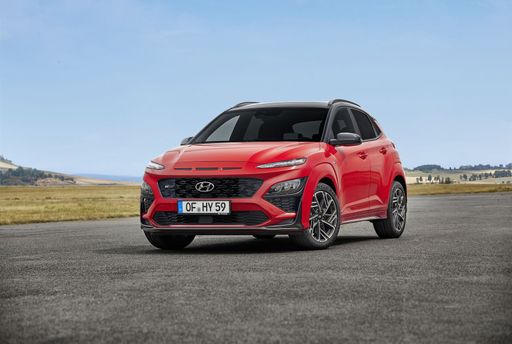 @ Hyundai Motor Company
@ Hyundai Motor Company
Hyundai Kona
Hyundai Kona
The Hyundai Kona wears its personality on the outside with bold styling and sprightly handling that turns city driving into something a little more fun than a commute. It blends practical space, modern tech and sensible running costs into a compact, stylish package — a smart pick if you want flair without paying luxury prices.
details @ Hyundai Motor Company
@ Hyundai Motor Company
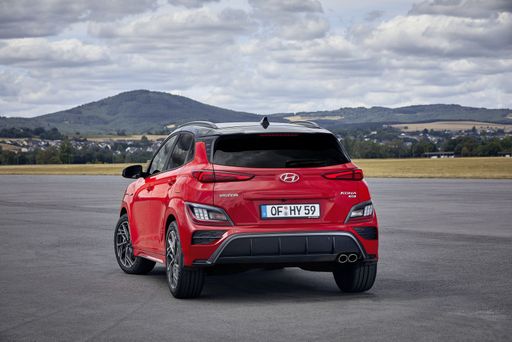 @ Hyundai Motor Company
@ Hyundai Motor Company
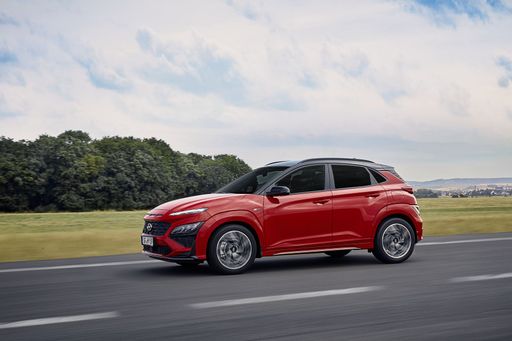 @ Hyundai Motor Company
@ Hyundai Motor Company
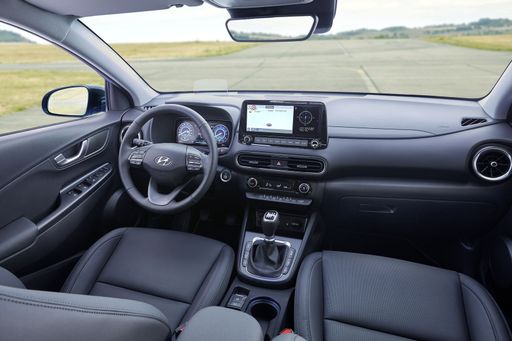 @ Hyundai Motor Company
@ Hyundai Motor Company
Suzuki S-Cross
The Suzuki S-Cross is a neatly packaged crossover that puts everyday practicality ahead of showy theatrics, offering a comfortable cabin and predictable handling that suit family life and weekend errands alike. It’s not a headline-grabber, but its sensible packaging, low-key charm and reputation for reliability make it a shrewd choice for buyers who prefer smart value over flash.
details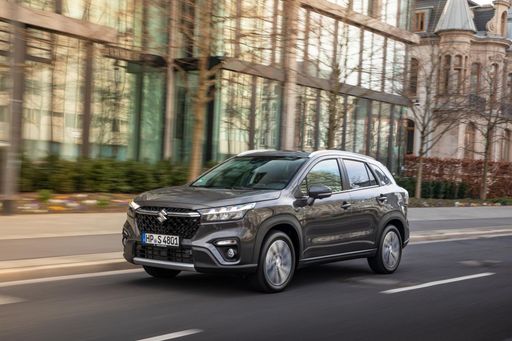 @ Suzuki Motor Corporation
@ Suzuki Motor Corporation
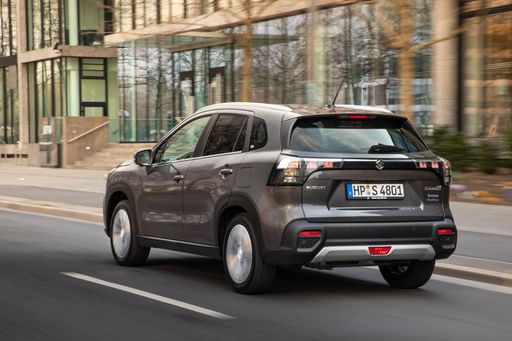 @ Suzuki Motor Corporation
@ Suzuki Motor Corporation
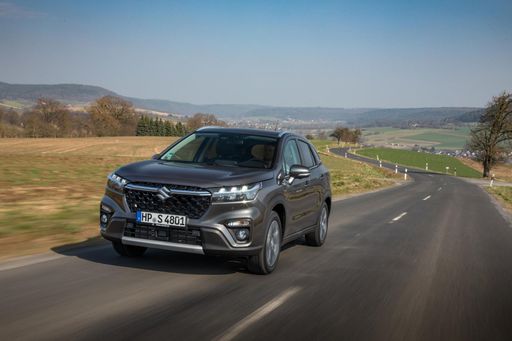 @ Suzuki Motor Corporation
@ Suzuki Motor Corporation
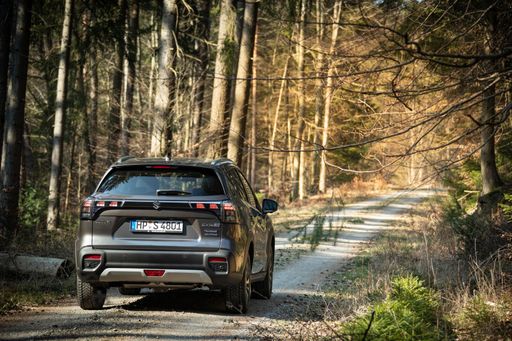 @ Suzuki Motor Corporation
@ Suzuki Motor Corporation
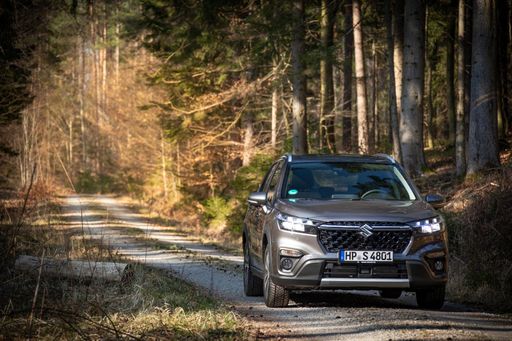 @ Suzuki Motor Corporation
@ Suzuki Motor Corporation
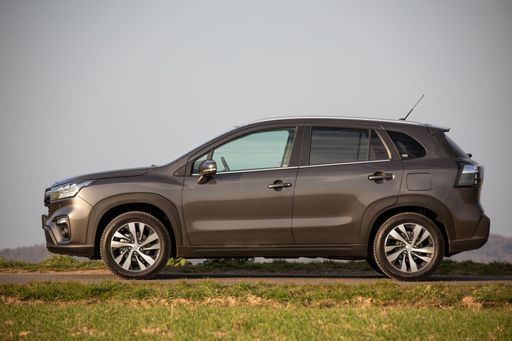 @ Suzuki Motor Corporation
@ Suzuki Motor Corporation
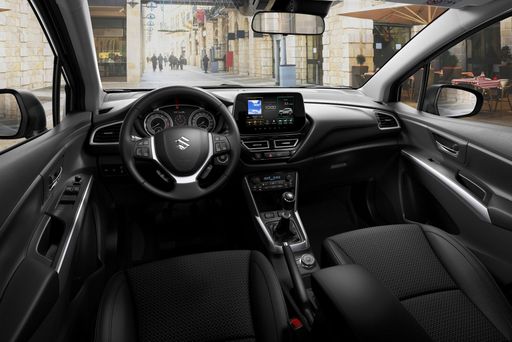 @ Suzuki Motor Corporation
@ Suzuki Motor Corporation
 @ Hyundai Motor Company
@ Hyundai Motor Company
|
 @ Suzuki Motor Corporation
@ Suzuki Motor Corporation
|
|
|
|
Costs and Consumption |
|
|---|---|
|
Price
23100 - 41600 £
|
Price
21800 - 34200 £
|
|
Consumption L/100km
4.6 - 7 L
|
Consumption L/100km
5.3 - 5.8 L
|
|
Consumption kWh/100km
14.6 - 16.8 kWh
|
Consumption kWh/100km
-
|
|
Electric Range
377 - 514 km
|
Electric Range
-
|
|
Battery Capacity
1.3 - 65.4 kWh
|
Battery Capacity
-
|
|
co2
0 - 163 g/km
|
co2
119 - 138 g/km
|
|
Fuel tank capacity
38 - 47 L
|
Fuel tank capacity
47 L
|
Dimensions and Body |
|
|---|---|
|
Body Type
SUV
|
Body Type
SUV
|
|
Seats
5
|
Seats
5
|
|
Doors
5
|
Doors
5
|
|
Curb weight
1370 - 1773 kg
|
Curb weight
1280 - 1385 kg
|
|
Trunk capacity
466 L
|
Trunk capacity
430 L
|
|
Length
4350 - 4385 mm
|
Length
4305 mm
|
|
Width
1825 mm
|
Width
1785 mm
|
|
Height
1580 - 1585 mm
|
Height
1580 mm
|
|
Max trunk capacity
1300 L
|
Max trunk capacity
1230 L
|
|
Payload
420 - 490 kg
|
Payload
395 - 405 kg
|
Engine and Performance |
|
|---|---|
|
Engine Type
Electric, Petrol, Full Hybrid
|
Engine Type
Petrol MHEV
|
|
Transmission
Automatic, Manuel
|
Transmission
Manuel, Automatic
|
|
Transmission Detail
Reduction Gearbox, Manual Gearbox, Dual-Clutch Automatic
|
Transmission Detail
Manual Gearbox, Automatic Gearbox
|
|
Drive Type
Front-Wheel Drive, All-Wheel Drive
|
Drive Type
Front-Wheel Drive, All-Wheel Drive
|
|
Power HP
115 - 218 HP
|
Power HP
110 HP
|
|
Acceleration 0-100km/h
7.8 - 11.9 s
|
Acceleration 0-100km/h
-
|
|
Max Speed
162 - 210 km/h
|
Max Speed
180 - 185 km/h
|
|
Torque
200 - 265 Nm
|
Torque
235 Nm
|
|
Number of Cylinders
3 - 4
|
Number of Cylinders
4
|
|
Power kW
85 - 160 kW
|
Power kW
81 kW
|
|
Engine capacity
998 - 1598 cm3
|
Engine capacity
1373 cm3
|
General |
|
|---|---|
|
Model Year
2024 - 2025
|
Model Year
2025
|
|
CO2 Efficiency Class
A, D, C, E, F
|
CO2 Efficiency Class
D, E
|
|
Brand
Hyundai
|
Brand
Suzuki
|
Is the Hyundai Kona offered with different drivetrains?
Available configurations include Front-Wheel Drive or All-Wheel Drive.
The prices and data displayed are estimates based on German list prices and may vary by country. This information is not legally binding.
